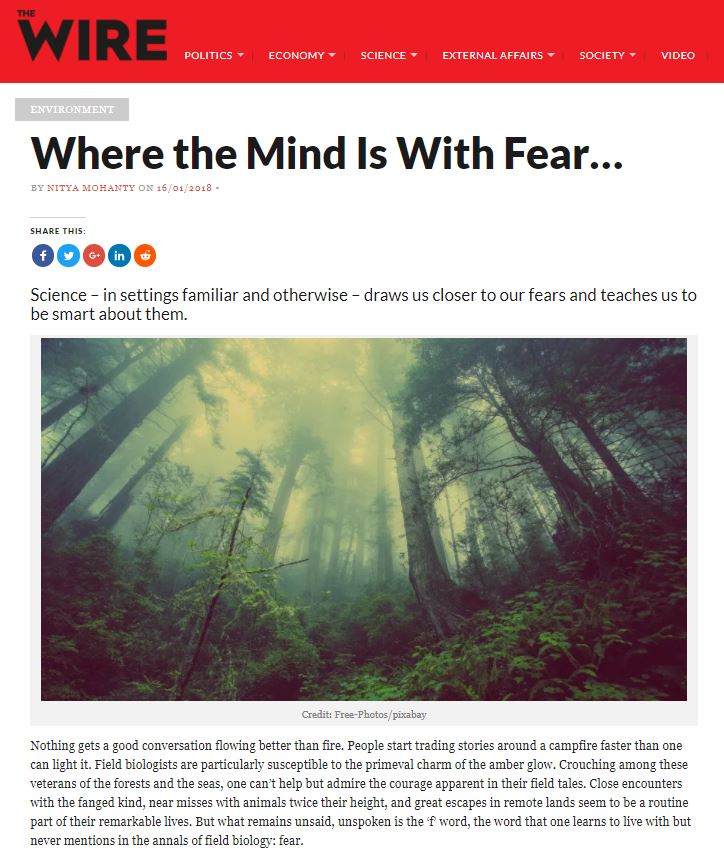Scientists in the field: the ways around the indignities we suffer
In this popular article for The Wire, Nitya Mohanty explores the life of a field biologist. It’s not always possible to feel comfy in the field, and many would be explorers find that they are better suited to lab studies.
I can think of numerous leaches (wear wellies – they can’t climb up), wasps, bees (sweat bees annoy to the appoint of distraction), bottle-ass flies, and bot flies that have made field work more arduous than it could have been.
The bot fly, Dermatobia hominis, lays its eggs on the legs of mosquitoes. They hatch when the mozzie bites and the young maggot crawls across your skin looking for lesions to gain access. I was in denial about my first bot fly maggot that I acquired on a field trip to the South of Belize in 1991. I didn’t feel it for a few weeks. One day we were attending the opening of a new power generator for the local village, Sarteneja. I could feel an uncomfortable poking of something at the back of my leg, behind my knee. At first, I thought it was a fly landing there. I swatted and found that my hand was wet with puss. I tried not to think about it for the rest of the very long speeches, but my mind would not allow me to think of anything except the poking I could feel in the back of my leg.
That night, I resolved to rid myself of the maggot. I knew that they relied on maintaining an active air hole to the surface. The poking I had felt was the maggot trying to reach fresh air from inside my leg with its posterior spiracle (breathing tube). If you deepen the distance the tube has to move, by smearing the skin with a thick layer of Vaseline, you can entice the maggot to leave your body. Sadly, in 30C heat and 100% humidity the chances of balancing a blob of Vaseline on the back of my knee was zero. Hours of frustrating contortion later, I gave up.
The solution was simply to allow the maggot to grow much larger, and then squeeze it out with maximum pressure applied to both sides of its body. Before I could get that far, I had to admit that I’d been infected, and once that was out of the way I felt much happier about letting the maggot grow large inside me. Yes, there was some discomfort, but the denial had been far worse that the reality.
Later I got more maggots in my shoulders and then one last one below my left eyebrow. This was acutely uncomfortable, in part because it stretched out the skin of my forehead and I was acutely aware of every move. I sort help straight away. In those days the British Army had a base in Belize, and someone thought that this was my best chance for removal. I’m not sure really why it came about, but I found myself in a military operating room with local anaesthetic being injected around my eye socket. The sapper whose expertise included bot fly removal was a very large guy. I swear I could feel my skull contorting as he applied maximum pressure either side of the maggot. Sadly, again, it was far too small to be popped out, and I left with a numb head and one of the blackest eyes I’ve ever possessed.
Within a couple of weeks I was snorkelling on the Belize barrier reef. The maggot could not take the prolonged exposure to the salt, died and got hauled out dead. I still remember the hooks around its body dragging along the hole as it was pulled out. Happy days.
